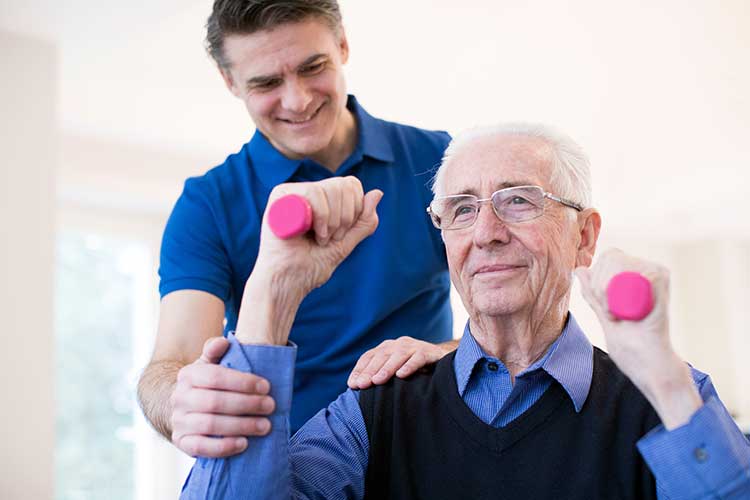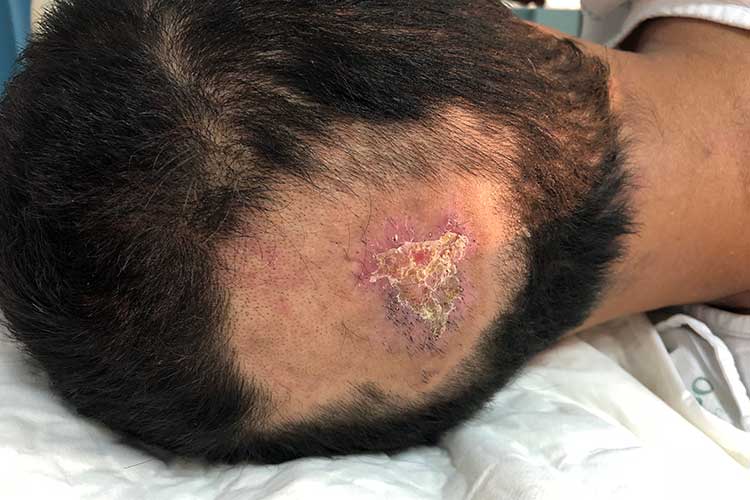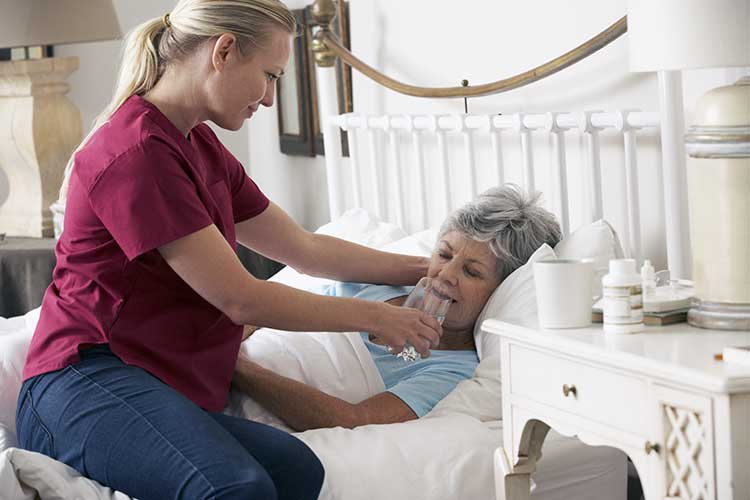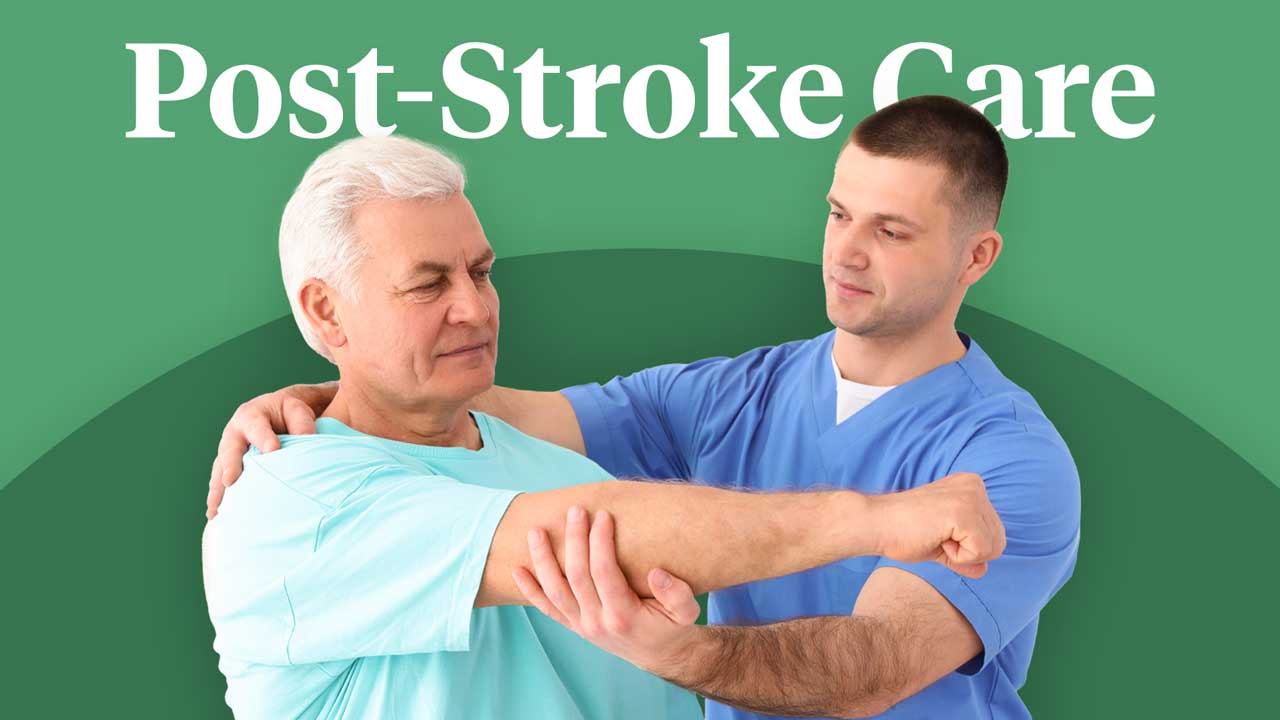Stroke is a leading cause of disability and mortality in Australia, affecting about 50,000 people every year (QBI 2020; AIHW 2023).
Over 445,087 Australians are currently living with the effects of stroke. These people may experience a variety of physical and psychological problems, including motor function impairment, memory and cognitive issues and difficulties with language and speech (QBI 2020; Stroke Foundation 2020a).
About one-third of people who have experienced a stroke are living with a disability that affects their daily life (Better Health Channel 2015).
While some people who experience a stroke are already receiving care, others may need to start receiving care after a stroke (at home or at a live-in facility) if their care needs change significantly (Stroke Foundation 2017a).
It’s important that you know how to appropriately care for clients who have experienced a stroke, as they have complex and diverse care needs.
The Effects of a Stroke
Read: Different Types of Strokes
The exact impact of a stroke depends on:
- The individual (including their general health and activity level prior to the stroke)
- The type of stroke
- The severity of the stroke
- The location of the stroke
- The location of the damage
- How much brain tissue has been damaged
- The number of strokes experienced.
(Stroke Foundation 2020b; Johns Hopkins Medicine 2022)
With this in mind, it is important to tailor your care to each client. While the exact effects of a stroke will differ from person-to-person, clients may experience:
- Weakness or neglect on one side of the body
- Coordination difficulties
- Dysphagia
- Personality or behavioural changes
- Emotional lability
- Cognitive impairment (memory, thinking, concentration, perception)
- Sensory difficulties
- Aphasia
- Vision loss
- Incontinence
- Fatigue
- Weakness in facial muscles
- Pain.
(Stroke Foundation 2018a; Stroke Association 2019)
The impacts of a stroke can affect many aspects of a client’s life, including mobility, toileting, bathing, getting dressed, hygiene and overall independence. This can be quite distressing for the client (Elder 2020).
Post-Stroke Rehabilitation

Rehabilitation is proven to help people who have experienced a stroke to regain function and independence, both immediately and in the long-term (Lynch et al. 2019).
Generally, rehabilitation involves relearning skills that were lost due to the stroke and learning new ways to perform tasks (Better Health Channel 2015).
It’s recommended that rehabilitation is commenced within the first few days following a stroke. It should be tailored to suit the client and their goals (Lynch et al. 2019).
Depending on the symptoms being experienced by the client, rehabilitation may include:
- Occupational therapy
- Physiotherapy
- Speech and language therapy
- Psychological therapy
- Dietary therapy.
(Stroke Association 2019)
Pressure Area Care
Read: Pressure Injuries and Ulcerations
People who have experienced a stroke are at high risk of developing pressure injuries (Liao et al. 2019). The physical problems resulting from a stroke can cause clients to be immobile and bedridden for long periods of time, putting continuous pressure on their skin (Better Health Channel 2020).
Two-thirds of people who experience strokes are over 65. As older adults have thinner and more delicate skin, this also increases the risk of pressure injuries (QBI 2020; Better Health Channel 2020).
Pressure injuries can be difficult to resolve and may result in complications such as severe pain or infection that adversely affects quality of life, mobility and rehabilitation (ACSQHC 2018).
You can help reduce the risk of pressure injury by:
- Assessing all clients upon admission to the service (within eight hours) for pressure injury risk and nutrition
- Using high specification foam reactive (constant low pressure) support surfaces or active alternate pressure support surfaces for high-risk clients
- Using constant low-pressure redistribution support surfaces for lower-risk clients
- Using pressure offloading surfaces (e.g. mattresses or wheelchair cushions)
- Using pressure injury monitoring devices
- Changing the client’s position regularly at least once every two hours if possible
- Facilitating mobilisation if possible
- Minimising pressure from devices such as catheters and oxygen tubing
- Checking the client’s skin for redness or discolouration daily
- Performing skin protection and hygiene
- Ensuring the client’s skin is adequately moisturised (not too dry or too moist)
- Never massaging bony areas of the skin
- Managing continence
- Encouraging a healthy diet
- Providing nutritional supplements if required
- Ensuring adequate nutrition and hydration
- Educating the client about pressure injuries.
(Better Health Channel 2020; ACSQHC 2018)
Remember to perform a pressure injury risk assessment for clients, document any injuries and escalate care if needed.

Preventing Future Strokes
An integral part of post-stroke care is reducing the risk of another stroke occurring.
It’s estimated that 40% of people who have had a stroke will go on to experience another in the next 10 years, with the first year after a stroke being the most high-risk timeframe. However, over 80% of strokes are preventable (Stroke Foundation 2018).
Any conditions that may increase the risk of a second stroke should be identified and addressed. These include high blood pressure, atrial fibrillation, diabetes and high cholesterol. Ensure these conditions are being managed and treated appropriately. You should also support the client to make healthy lifestyle choices and encourage them to refrain from smoking (Stroke Association 2019).
Post-Stroke Palliative Care
After experiencing a severe stroke, some clients may begin to approach the end of their lives. Palliative care can help support clients to achieve the best possible quality of life in their final days by providing relief from pain and symptoms, and meeting their physical, psychological, social, emotional and spiritual needs (Stroke Foundation 2017b).
Refer to A Palliative Approach to Care for more information.
Practical Tips for Post-Stroke Care

- Allow clients plenty of time to answer questions. It may take up to 30 seconds for some people to respond. Ask one question at a time.
- Avoid answering questions on the client’s behalf.
- Ensure the client’s personal items are in reach.
- Remove clutter in walkways and doorways.
- Consider implementing handrails, non-slip mats and other aids if required.
- Ensure clients with dysphagia have an appropriate diet. This should be monitored regularly.
- Ensure you are appropriately trained in feeding clients with dysphagia.
- Provide the client with aphasia-friendly written material.
- Monitor and manage the client’s fluid and dietary intake.
- Assist the client to maintain oral hygiene, if required.
- Screen the client for depression and mood disturbance.
- Follow the client’s falls management plan.
- Refer the client to a specialist service if required.
(Stroke Association 2019; Ninkatec 2020; Stroke Foundation 2023)
Conclusion
Strokes affect people in a variety of ways, often causing physical and psychological difficulties that impact independence and functional ability. It is important to understand the effects of stroke so that you can support your clients in their daily lives and refer them to specialist services if required.
Test Your Knowledge
Question 1 of 3
True or false: Most strokes are preventable.
Topics
References
- Australian Commission on Safety and Quality in Health Care 2018, Hospital-Acquired Complication: Pressure Injury, Australian Government, viewed 13 September 2023, https://www.safetyandquality.gov.au/sites/default/files/migrated/SAQ7730_HAC_Factsheet_PressureInjury_LongV2.pdf
- Australian Institute of Health and Welfare 2023, Heart, Stroke and Vascular Disease: Australian Facts, Australian Government, viewed 13 September 2023, https://www.aihw.gov.au/reports/heart-stroke-vascular-diseases/hsvd-facts/contents/all-heart-stroke-and-vascular-disease/stroke
- Better Health Channel 2020, Pressure Sores, Victoria State Government, viewed 13 September 2023, https://www.betterhealth.vic.gov.au/health/conditionsandtreatments/pressure-sores
- Better Health Channel 2015, Rehabilitation After Stroke, Victoria State Government, viewed 13 September 2023, https://www.betterhealth.vic.gov.au/health/conditionsandtreatments/rehabilitation-after-stroke
- Elder 2020, Stroke Care, Elder, viewed 13 September 2023, https://www.elder.org/live-in-care/how-can-live-in-home-care-help-with-stroke-recovery/
- Johns Hopkins Medicine 2022, Effects of Stroke, Johns Hopkins Medicine, viewed 13 September 2023, https://www.hopkinsmedicine.org/health/conditions-and-diseases/stroke/effects-of-stroke
- Liao, X, Ju, Y, Liu, G, Zhao, X, Wang, Y & Wang, Y 2019, ‘Risk Factors for Pressure Sores in Hospitalized Acute Ischemic Stroke Patients’, Journal of Stroke & Cerebrovascular Disease, vol. 28, no. 7, viewed 13 September 2023, https://www.strokejournal.org/article/S1052-3057(19)30089-8/pdf
- Lynch, EA, Mackintosh, S, Luker, JA & Hiller, S L, ‘Access to Rehabilitation for Patients With Stroke in Australia’, The Medical Journal of Australia, vol. 210 no. 1, viewed 13 September 2023, https://www.mja.com.au/journal/2019/210/1/access-rehabilitation-patients-stroke-australia#1
- Ninkatec 2023, Home Care Guide For Stroke Patients: How To Start Recovering From A Stroke, Ninkatec, viewed 13 September 2023, https://ninkatec.com/home-care-guide-stroke-recovery/
- Queensland Brain Institute 2020, Stroke Facts, University of Queensland, viewed 13 September 2023, https://qbi.uq.edu.au/brain/brain-diseases/stroke/stroke-facts
- Stroke Association 2019, Supporting a Stroke Survivor, Stroke Association, viewed 13 September 2023, https://www.stroke.org.uk/sites/default/files/supporting_a_stroke_survivor_v2_april_2019.pdf
- Stroke Foundation 2023, Clinical Guidelines for Stroke Management, Stroke Foundation, viewed 13 September 2023, https://informme.org.au/en/Guidelines/Clinical-Guidelines-for-Stroke-Management
- Stroke Foundation 2020b, Effects of Stroke, Stroke Foundation, viewed 13 September 2023, https://strokefoundation.org.au/About-Stroke/Learn/Effects-of-stroke
- Stroke Foundation 2020a, Facts and Figures, Stroke Foundation, viewed 13 September 2023, https://strokefoundation.org.au/About-Stroke/Learn/facts-and-figures
- Stroke Foundation 2017a, Moving to Residential Aged Care After Stroke, Stroke Foundation, viewed 13 September 2023, https://strokefoundation.org.au/What-we-do/For%20survivors%20and%20carers/stroke-resources-and-fact-sheets/Moving-to-residential-aged-care-after-stroke-fact-sheet
- Stroke Foundation 2017b, Palliative Care After Stroke, Stroke Foundation, viewed 13 September 2023, https://strokefoundation.org.au/What-we-do/For%20survivors%20and%20carers/stroke-resources-and-fact-sheets/Palliative-care-after-stroke-fact-sheet
- Stroke Foundation 2018, Ready to Live: A Plan to Deliver All Victorian Stroke Survivors and Their Families a Better Future, Stroke Foundation, viewed 13 September 2023, https://strokefoundation.org.au/media/2uzbvv03/2018-vic-victorian-election-platform.pdf
 New
New 
